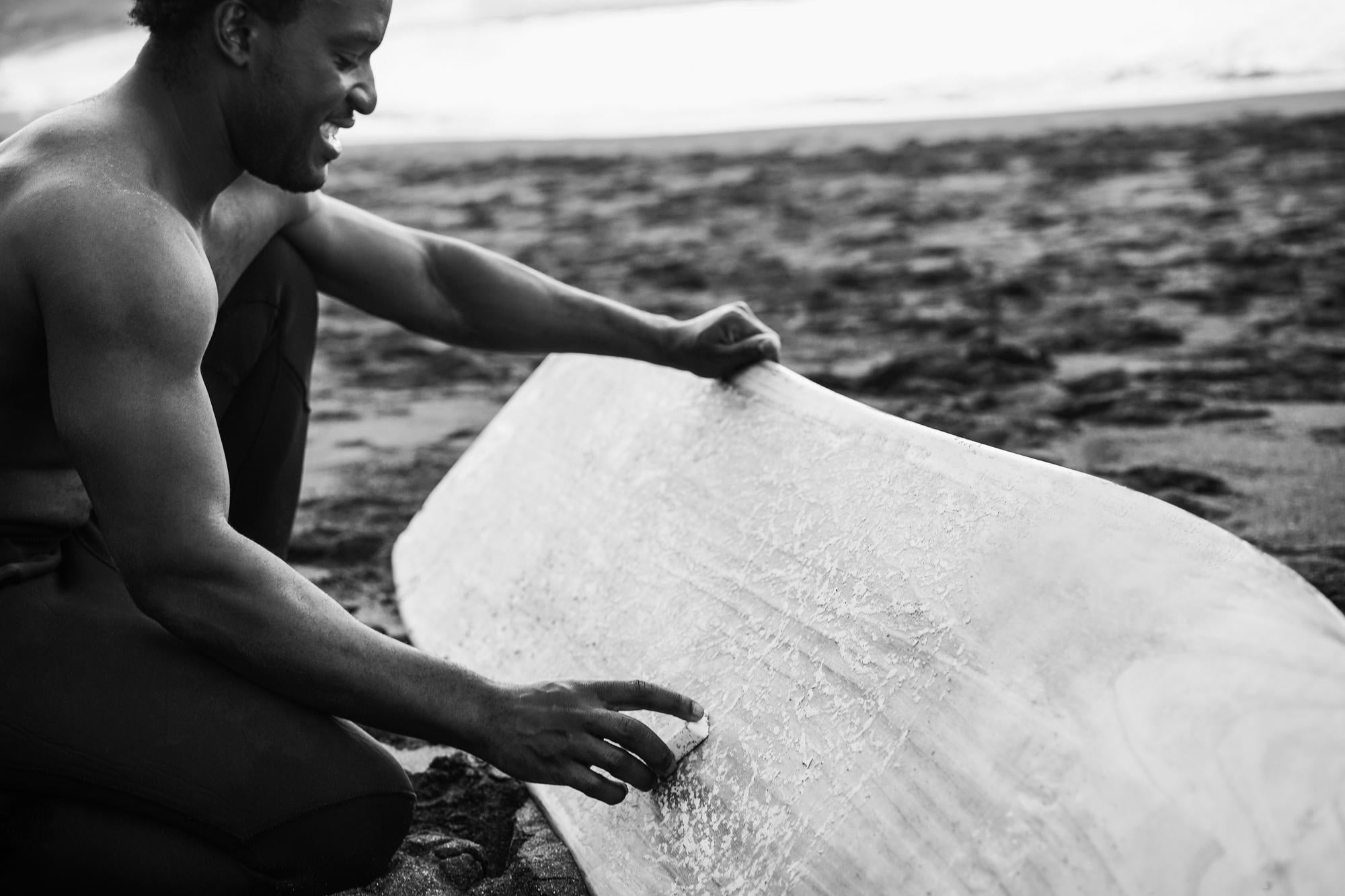Waxing your surfboard is essential for maintaining grip and control while riding the waves. Whether you're a seasoned surfer or a beginner, knowing how to properly wax your board is a crucial skill. In this guide, we’ll walk you through the step-by-step process of waxing your surfboard to ensure you’re ready for your next surf session.
Materials You’ll Need:
- Base coat wax
- Top coat (or regular) wax
- Wax comb
- Clean cloth or towel
Step 1: Clean Your Surfboard
Before you start waxing, make sure your surfboard is clean and dry. Any dirt, sand, or old wax residue can affect the new wax's adhesion.
- Rinse your board with fresh water to remove any sand or salt.
- Use a wax comb or a plastic scraper to remove old wax. If the wax is stubborn, leave your board in the sun for a few minutes to soften the wax, making it easier to scrape off.
- Wipe down the board with a clean cloth or towel to remove any remaining residue.
Step 2: Apply the Base Coat
The base coat is crucial for creating a good foundation for the top coat, especially if you’re waxing a new board or one that's been thoroughly cleaned.
- Choose a base coat wax that matches the temperature of the water you'll be surfing in.
- Start by rubbing the base coat wax onto the board in small, circular motions. This helps to create a textured surface for the top coat to adhere to.
- Cover the entire surface where your feet will be, usually from the tail to about halfway up the board, or to the nose if you prefer more coverage.
- Once the board is covered with a thin, even layer of base coat, you can move on to the top coat.
Step 3: Apply the Top Coat
The top coat is what gives you the grip you need while surfing. It’s applied over the base coat and should be matched to the water temperature for optimal performance.
- Choose a top coat wax suitable for the current water temperature.
- Using the same small, circular motions, apply the top coat over the base coat. This will build up small bumps on the surface, providing the necessary traction.
- Focus on the areas where your feet will make contact with the board the most. If you’re a beginner, it's better to cover a larger area to ensure you have plenty of grip.
Step 4: Check and Maintain the Wax
Regularly checking and maintaining your wax ensures you always have the grip you need.
- Before each surf session, inspect your board to ensure the wax is still providing good traction.
- If the wax starts to feel smooth or slippery, use a wax comb to roughen up the surface and restore some grip.
- Depending on how often you surf, you may need to apply a fresh layer of top coat wax every few sessions.
Tips and Tricks
- Temperature-Specific Wax: Always use wax that matches the water temperature. Warm water wax is softer and will melt in cold water, while cold water wax is harder and won’t provide grip in warm water.
- Wax Comb: A wax comb is a handy tool for roughening up old wax and maintaining grip.
- Avoid Over-Waxing: Too much wax can be counterproductive. A thin, even layer is usually sufficient.
By following these steps, you'll ensure your surfboard is always ready for action, providing you with the grip and control you need to ride the waves confidently. Happy surfing!




